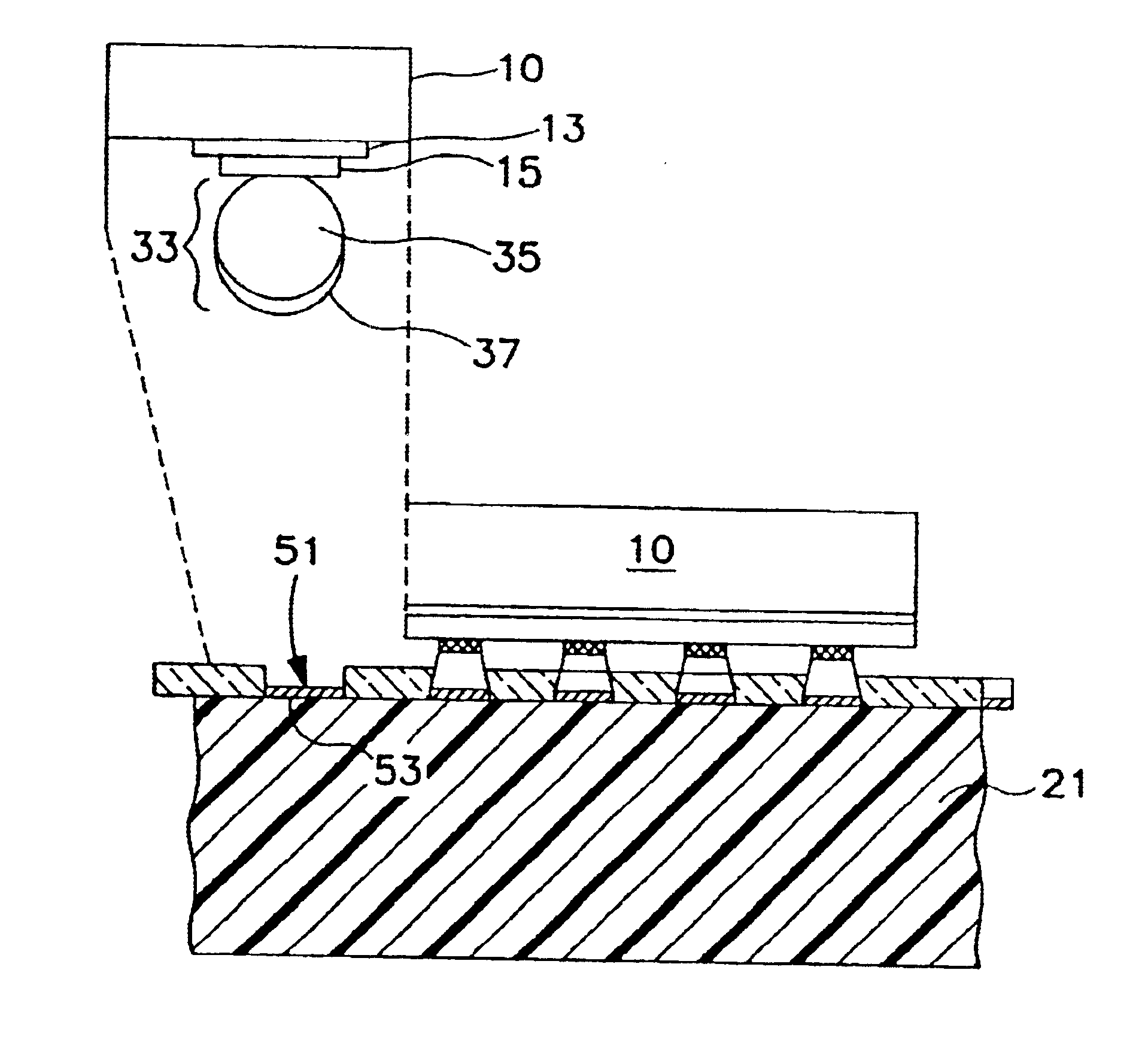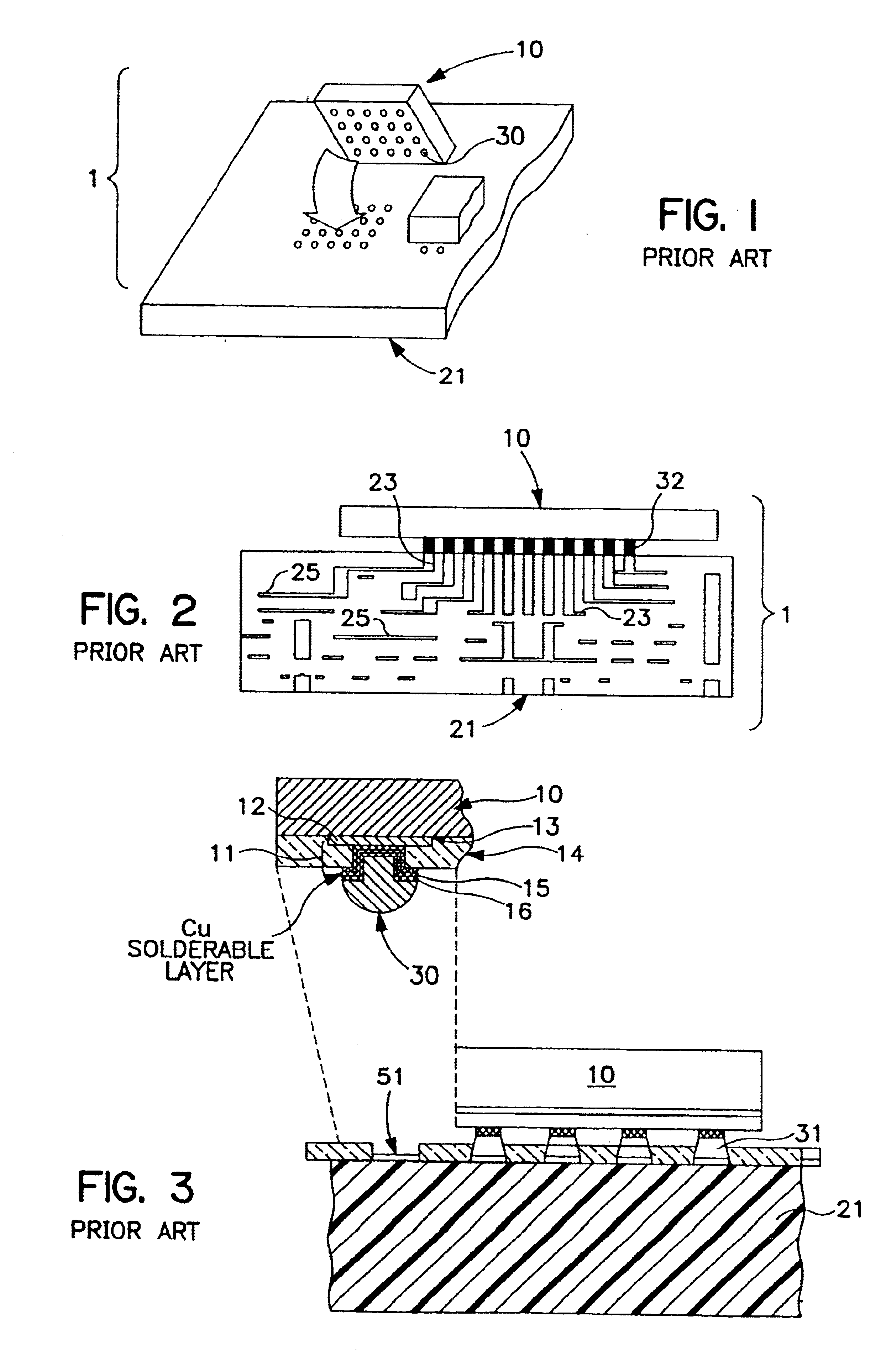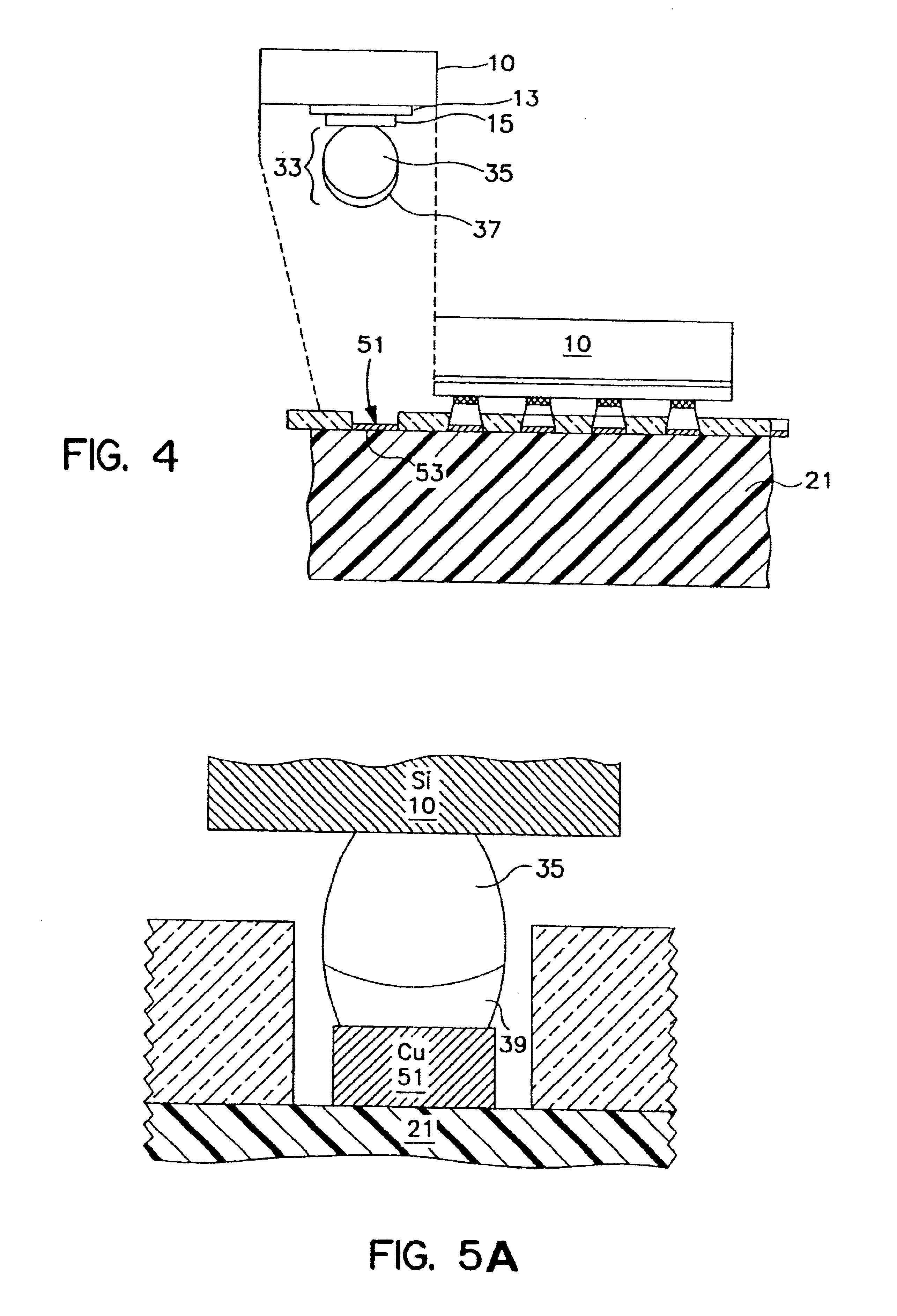Low temperature solder chip attach structure
a low temperature, solder chip technology, applied in the direction of sustainable manufacturing/processing, semiconductor/solid-state device details, final product manufacturing, etc., can solve the problems of high cost of fabrication, inability to meet the requirements of high-temperature solder chip requirements, etc., to achieve the effect of increasing the reliability of the connection
- Summary
- Abstract
- Description
- Claims
- Application Information
AI Technical Summary
Benefits of technology
Problems solved by technology
Method used
Image
Examples
first embodiment
The structure of an integrated circuit (IC) chip 10 and a microelectronic circuit card 21 of the present invention is shown in FIG. 4. FIG. 4 is a cutaway view of an IC chip 10 and card 21 with a nonreflowed solder assembly 33, and a land 53 on which an adhesion or joining pad 51, preferably copper (Cu), is placed. The solder assembly 33 comprises a low melting point cap 37 formed atop a high melting point ball 35. The low melting point cap is preferably Sn, but other low melting point materials such as indium or bismuth can be used.
The high melting point ball 35, preferably Pb-rich, is deposited on solder wettable input / output (I / O) terminals 15 of an IC chip 10 or a chip carrier or other substrate. The Pb-rich balls are formed by a conventional process and affixed to the IC chip 10 in a conventional manner. A thin cap of Sn 37 is formed on the end of the ball 35. The Sn cap 37 can be applied to the Pb-rich ball 35 using any conventional process. The thickness of the cap 37 is pref...
second embodiment
the present invention is shown in FIG. 6. In FIG. 6, the Pb-rich ball 35 is attached to the IC chip 10 as in the first embodiment, but the ball 35 does not have a thin Sn cap layer. Instead, a thin layer of Sn 48 is formed on the Cu pad 51 on the land 53. The IC chip 10 with the ball 35 is brought into contact with the Sn layer 48 on the Cu pad 51 on the land 53 and heated to form the eutectic alloy. In other words, a thin Sn cap layer can be deposited onto the PCB contact and the Pb-rich ball (without the Sn cap layer) is pressed against the PCB contact. After the eutectic is formed, annealing is performed, preferably at 150° C. for 4-5 hours, to diffuse Sn into the Pb to increase the melting point of the cap layer of the resultant assembly, thus avoiding further unwanted melting during subsequent processing. Depending on the process parameters, some of the Sn may not be consumed in the eutectic and there may be a thin, high-percentage Sn layer (not shown) remaining between the eut...
PUM
| Property | Measurement | Unit |
|---|---|---|
| Length | aaaaa | aaaaa |
| Length | aaaaa | aaaaa |
| Temperature | aaaaa | aaaaa |
Abstract
Description
Claims
Application Information
 Login to View More
Login to View More - R&D
- Intellectual Property
- Life Sciences
- Materials
- Tech Scout
- Unparalleled Data Quality
- Higher Quality Content
- 60% Fewer Hallucinations
Browse by: Latest US Patents, China's latest patents, Technical Efficacy Thesaurus, Application Domain, Technology Topic, Popular Technical Reports.
© 2025 PatSnap. All rights reserved.Legal|Privacy policy|Modern Slavery Act Transparency Statement|Sitemap|About US| Contact US: help@patsnap.com



